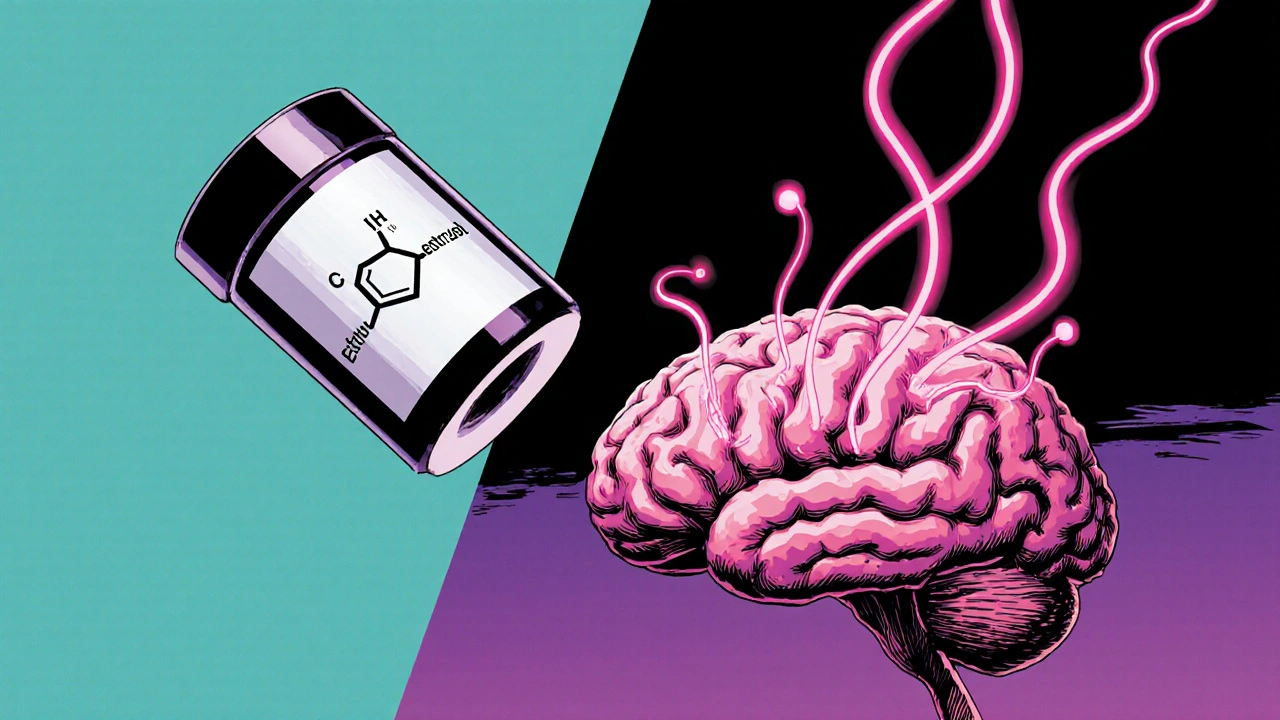
Explore how the synthetic estrogen ethinylestradiol BP influences mood and mental health, uncover risk factors, and learn practical steps to manage side effects.
When working with ethinylestradiol BP, a synthetic estrogen commonly used in combined hormonal contraceptives and hormone‑replacement products. Also known as EE BP, it provides the estrogenic component that helps regulate the menstrual cycle and prevent pregnancy.
The first related entity you’ll encounter is oral contraceptives, pills that combine an estrogen like ethinylestradiol BP with a progestogen to stop ovulation. This combination works by suppressing the hypothalamic‑pituitary‑ovarian axis, which means the body never gets the signal to release an egg. The second key player is progestogen, the synthetic progesterone partner that stabilizes the uterine lining and reduces breakthrough bleeding. Together they create the effect of combined hormonal contraception, a reliable method for many women.
Beyond birth control, ethinylestradiol BP appears in estrogen replacement therapy, treatments used to alleviate menopausal symptoms by supplementing declining natural estrogen. In this context, the dose is usually lower than in contraceptives, aiming to balance relief of hot flashes, mood swings, and bone loss without overstimulating the breast or uterine tissue.
Understanding the pharmacological profile helps you make smart choices. Ethinylestradiol BP has a high oral bioavailability, meaning most of the pill reaches the bloodstream unchanged. Its half‑life is about 24 hours, which aligns well with a once‑daily dosing schedule. However, the estrogen dose directly influences the risk of side effects such as nausea, breast tenderness, or, in rare cases, thromboembolic events. That’s why clinicians carefully match the estrogen amount to a patient’s age, health history, and smoking status.
When it comes to safety, timing and interactions matter. Taking the pill at the same time each day maintains steady hormone levels and reduces the chance of breakthrough spotting. Certain medications—like some antibiotics, anticonvulsants, and herbal supplements—can accelerate the metabolism of ethinylestradiol BP, making the contraceptive less effective. Always tell your doctor about any new prescription or over‑the‑counter product you start.
If you miss a dose, the response depends on how many pills are missed and where you are in the pack. Missing one pill generally means you should take it as soon as you remember and continue normally. Missing two or more may require a backup method, such as condoms, for the next seven days. The package insert usually provides a clear flowchart, but a quick call to your pharmacy can clarify any doubt.
Side‑effect management often starts with lifestyle tweaks. For nausea, taking the pill with food or at bedtime can help. Breast tenderness may ease with a supportive bra and over‑the‑counter pain relievers, but avoid NSAIDs if you have clotting concerns. Mood changes can be trickier; if they persist beyond the first cycle, discuss switching to a different estrogen dose or a progestogen‑only option with your provider.
Weight gain is another common worry, yet most studies show that any change is modest and often linked to fluid retention rather than fat accumulation. A balanced diet and regular exercise remain the best tools for maintaining a healthy weight while on hormonal therapy.
For women with specific health conditions, the choice of ethinylestradiol BP dose matters a lot. Those with a history of migraines with aura, uncontrolled hypertension, or a personal or family history of blood clots should generally avoid estrogen‑containing pills. In these cases, progestogen‑only pills, intrauterine devices, or non‑hormonal methods become preferable alternatives.
Some readers wonder about the environmental impact of synthetic estrogens. When excreted, traces of ethinylestradiol BP can enter water systems and affect wildlife. While individual users can’t control wastewater treatment, proper disposal of unused pills—do not flush—helps reduce the load.
Finally, remember that hormone therapy is not a one‑size‑fits‑all solution. Regular follow‑up appointments let you and your clinician assess effectiveness, side‑effects, and any needed dosage adjustments. Blood pressure checks, lipid panels, and occasional liver function tests can catch early signs of complications.
Below you’ll find a curated set of articles that dive deeper into specific aspects of ethinylestradiol BP—from managing dry mouth during cancer treatment to comparing hormone therapies and navigating medication safety. Whether you’re starting a new contraceptive, adjusting hormone replacement, or simply wanting to understand how this estrogen works, the posts ahead offer practical insights and clear guidance.

Explore how the synthetic estrogen ethinylestradiol BP influences mood and mental health, uncover risk factors, and learn practical steps to manage side effects.